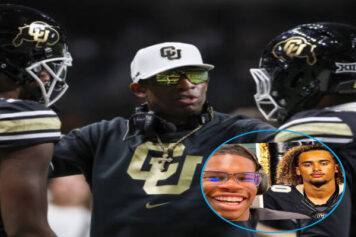Artistic expression is far more than merely pretty colors and patterns. Some of the best works of art in the history of western civilization tell a story about the creator or the subject matter. They also act as oracles in revealing long held secrets and teaching all who seek to know of a people and a culture that have long since returned to dust with the advance of time. This is what happened when the story of Dido Elizabeth Belle was discovered by writer Misan Sagay. Starring Gugu Mbatha-Raw (Dido), Tom Wilkinson (William Murray) and Miranda Wilkinson, Belle tells the true story of Dido, a black woman raised in high society England during the Georgian period of the 18th century. Born to an African slave and British Naval captain, Dido is a member of the household of Lord Chief Justice William Murray, the 1st Earl of Mansfield. Loved and provided for, she has a sister figure in her cousin Lady Elizabeth Murray. But as Dido comes of age, she soon realizes her place in the world as a woman of African descent is that of a second class citizen.
“I was so excited because this is such a familiar classic period drama. You’ve seen so many period dramas over the years but never told from the perspective of a woman,” says star GuGu Mbatha-Raw, who plays Dido with beauty, class and conviction. “To have a woman in the center of it, and not just any woman but a bi-racial woman, and directed by a woman, written by a woman. It was really just refreshing to me to be able to explore this love story as well as to have it all grounded by this socio-political context of the time really weighted it in reality and made it feel more contemporary. It’s just sort of arresting to see someone who looks like me at the center of it. She’s not a servant or used in a brutalized role. She’s a lady, she has an education and was articulate.”
Written by Misan Sagay, the timeless tale was inspired by Sagay’s random discovery. “I was at the University of Scotland as a medical student and St. Andrews is a very white, traditional university so quite often I would be the only black person around,” she explains while sitting at New York’s Palace Hotel. “So, I went to visit School Palace, and I was walking through and came to a room and there was a black woman in a painting. I was stunned, intrigued and rather thrilled. She didn’t look like a slave or a servant and I looked at the caption. It simply read: ‘Lady Elizabeth Murray.” I remember carrying this image with me for years and when I went back to Scotland years later and saw the painting the caption had been changed to: ‘The Lady Elizabeth Murray and Dido, the Housekeeper’s Daughter.’ I looked at the painting and thought ‘Housekeeper’s daughter? That doesn’t sound right.’ And that was the jumping off point for me in this script that was based on a woman who was just gazing out in this portrait with a mischievous look on her face, pointing to her cheek as if to say ‘I am who I am.’”
Directed by Amma Asante, the pieces came into place creating a wonderful tapestry of sights and sounds that were historically accurate yet contained a contemporary message of love and understanding. Like writer Misan Sagay, Amma’s connection with the story of Dido Belle came via artwork as well.
“A post card of the portrait was sent to me by Damion Jones, my producer, and it fell in my lap. It came in the context of me having gone to a wonderful exhibition at an art gallery in Amsterdam a year before in which the history of black people in art was being traced from the 14th century onward. It was the most fascinating art exhibition that I had ever been to. It charted us from being almost like a pet in the background, lower in the picture, or looking up at the protagonist, but never out at the painter,” she says. “So I could see why the painting of Dido was different. I could see that Dido was treated with value. She was looking out at the painter, Elizabeth is touching her rather than the other way around, as was the case in other 18th century paintings. She’s actually a little higher in the painting than Elizabeth. Rather than be like some people who were concerned about the fact that she was carrying fruit or wearing a turban on her head to exotic-ize her, I was able to place her in an art history context.”
Not only is the story of Dido Elizabeth Belle one of high-society, race and class, but it’s a love story as well. Australian actor Sam Reid plays John Davinier, the love interest and eventual husband to Dido. Their interracial courtship in the 18th century was rare to say the least.
“When John meets Dido he doesn’t think that she is a bi-racial lady in a fancy dress. He just thinks she’s a snob,” says Reid. “That had nothing to do with the color of her skin. Then, they literally have a meeting of the minds, then they fall in love. It’s nice to be able to play a role where your character is not open to that social conditioning and is willing to meet people soul-to-soul, essentially.
“I think for Dido, she grew up in such a secluded environment. She really was just a part of the family. I think that is really refreshing the way we developed a bond with Sarah Gadon That family structure, so when we get to the point in the film where I come in and play the role we find that suddenly she’s aware of the world at large,” said Gugu. “I think at some point all of us grow up knowing who we are but get to the point where we kind of get beat down and society kind of shapes us. It was great to see that transition for the character and the film as well.”
Opening in limited release nationwide on May 2, Belle opens in the United Kingdom in June. A story about race, class and justice, Belle is an excellent cinematic experience that satisfies the mind and soothes the heart.



